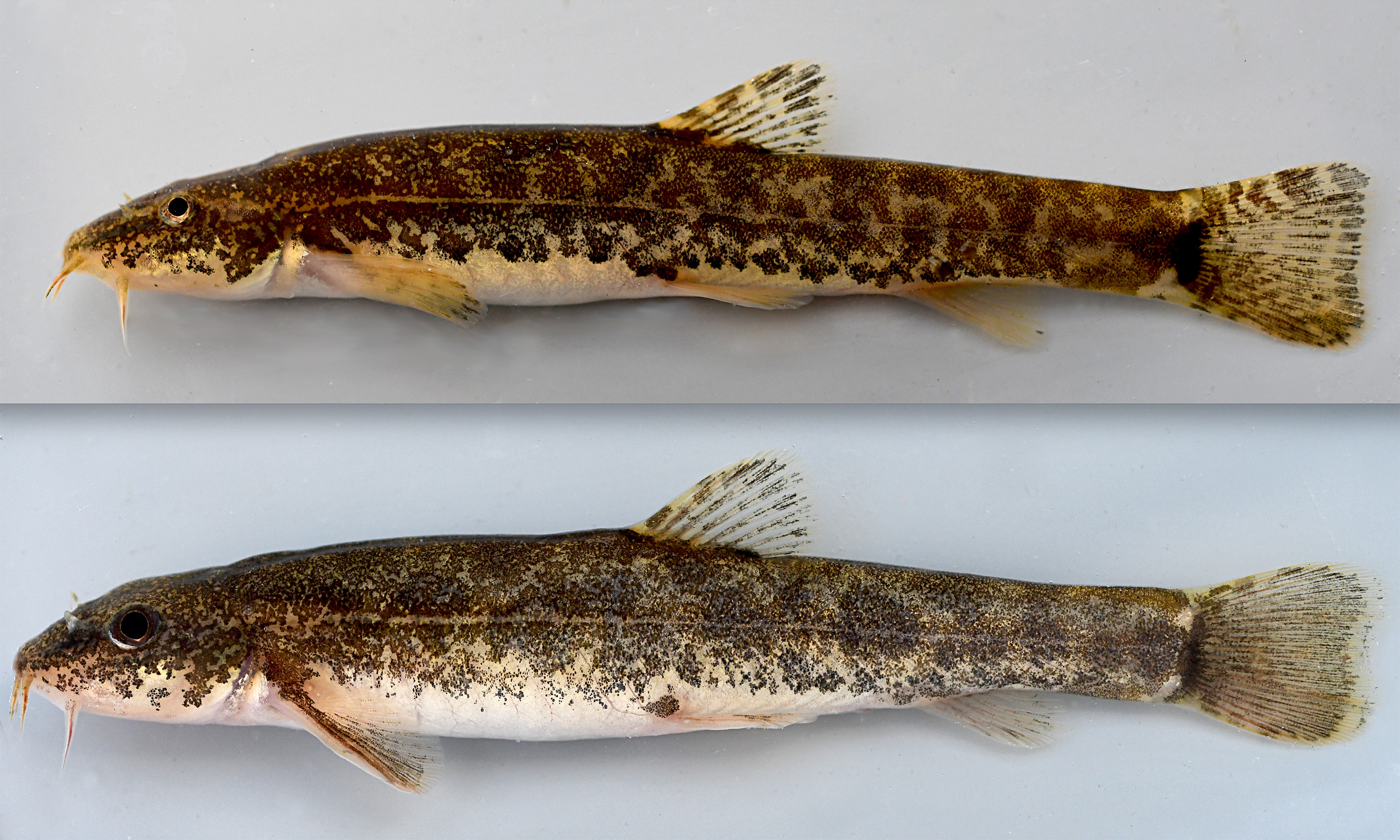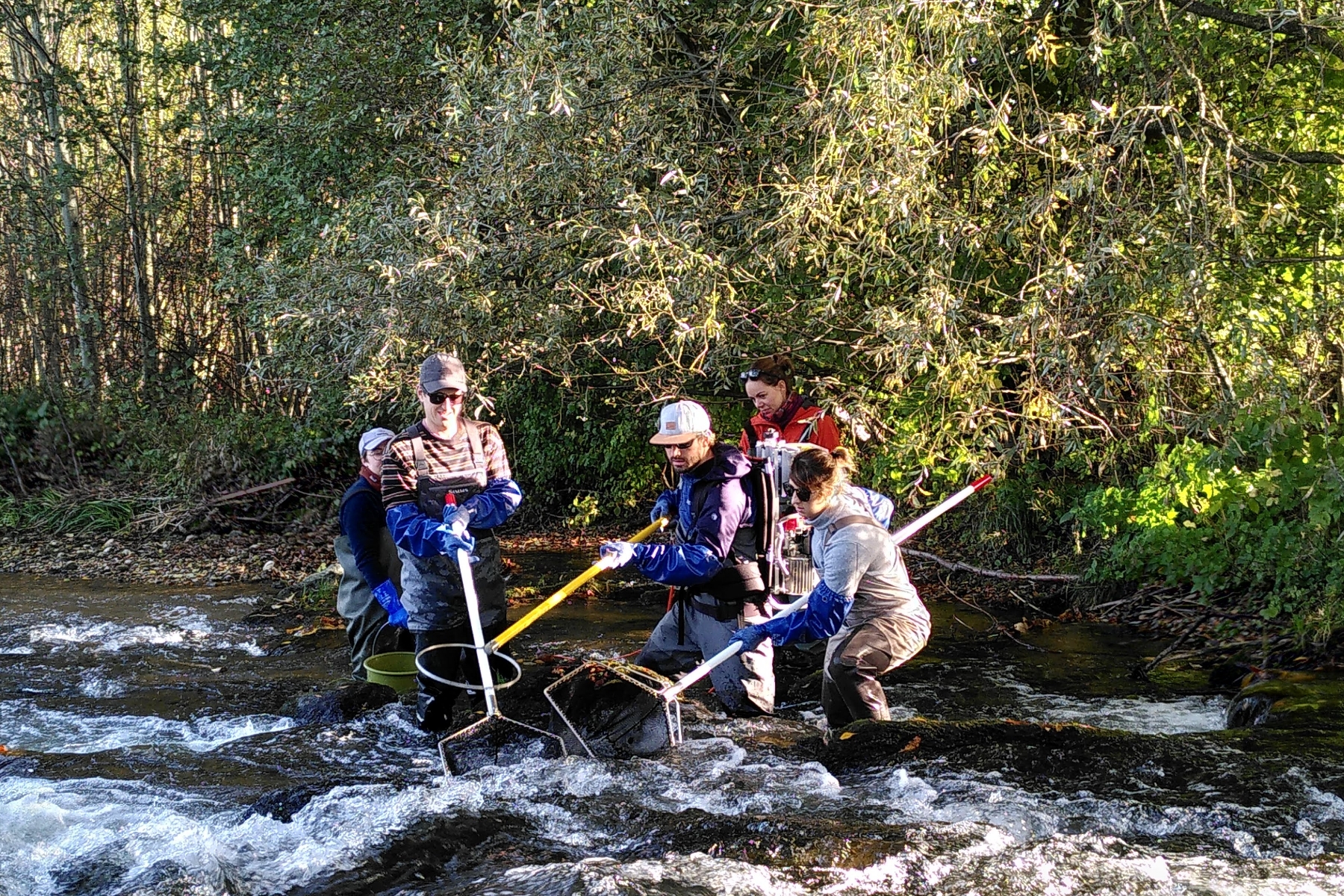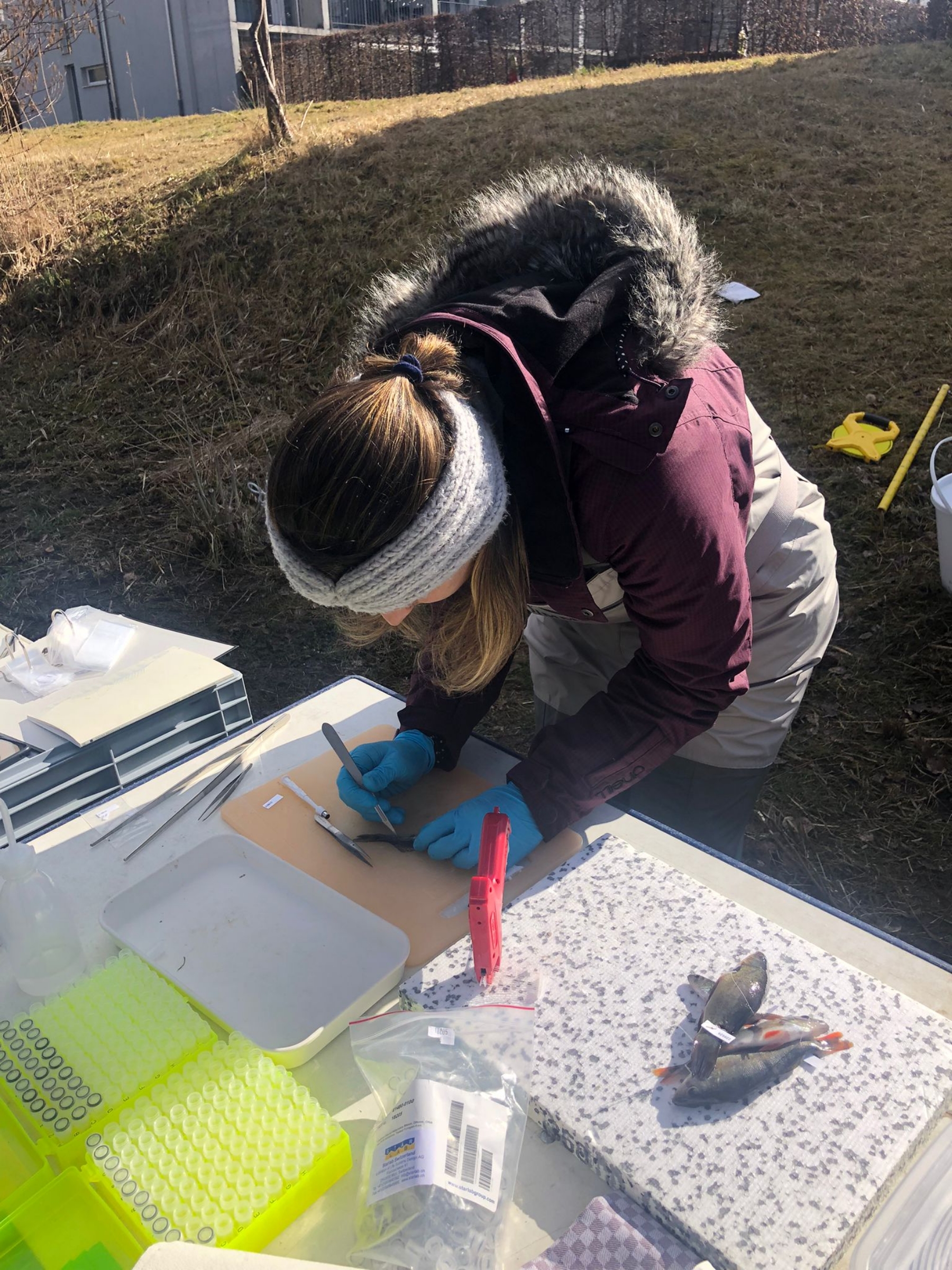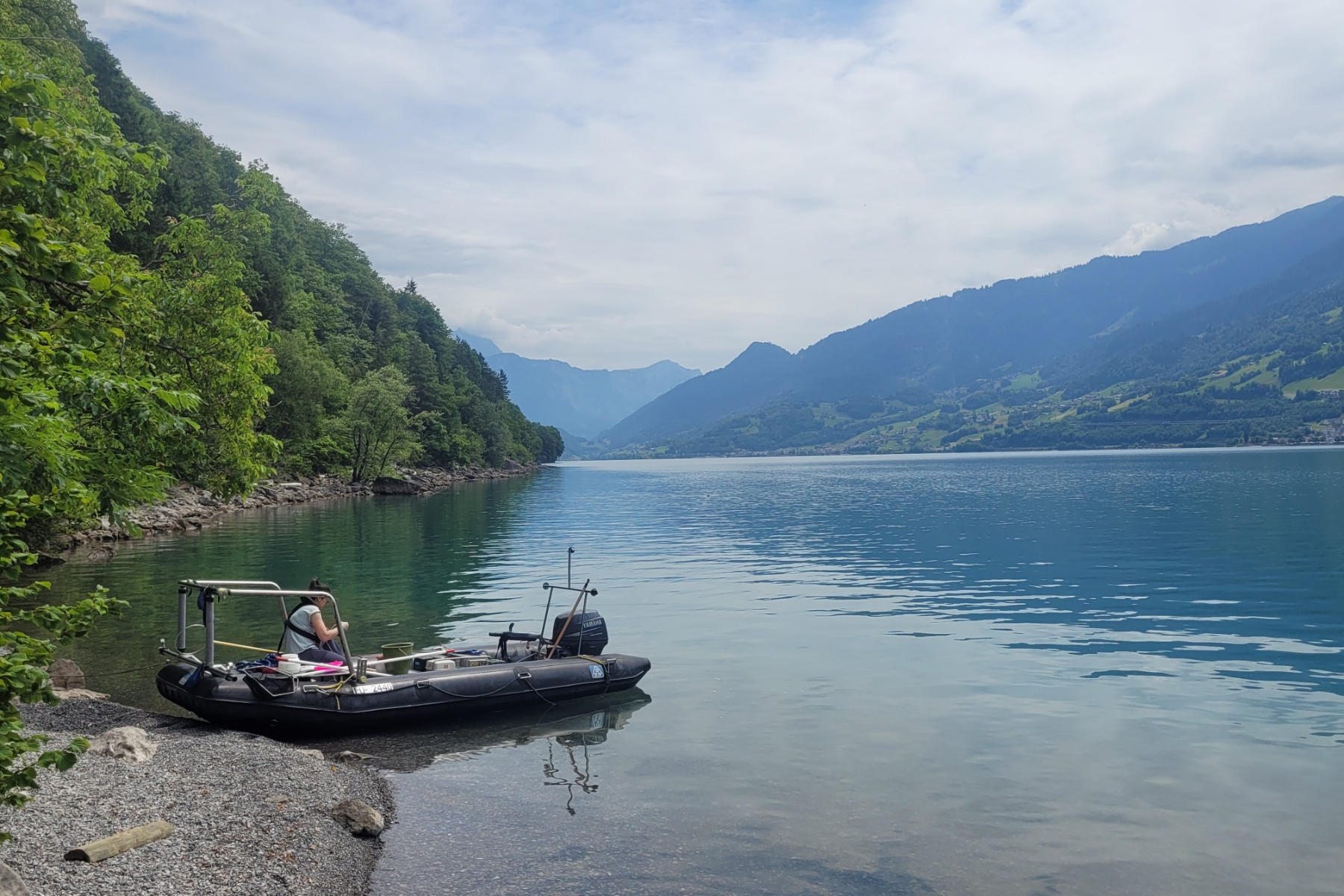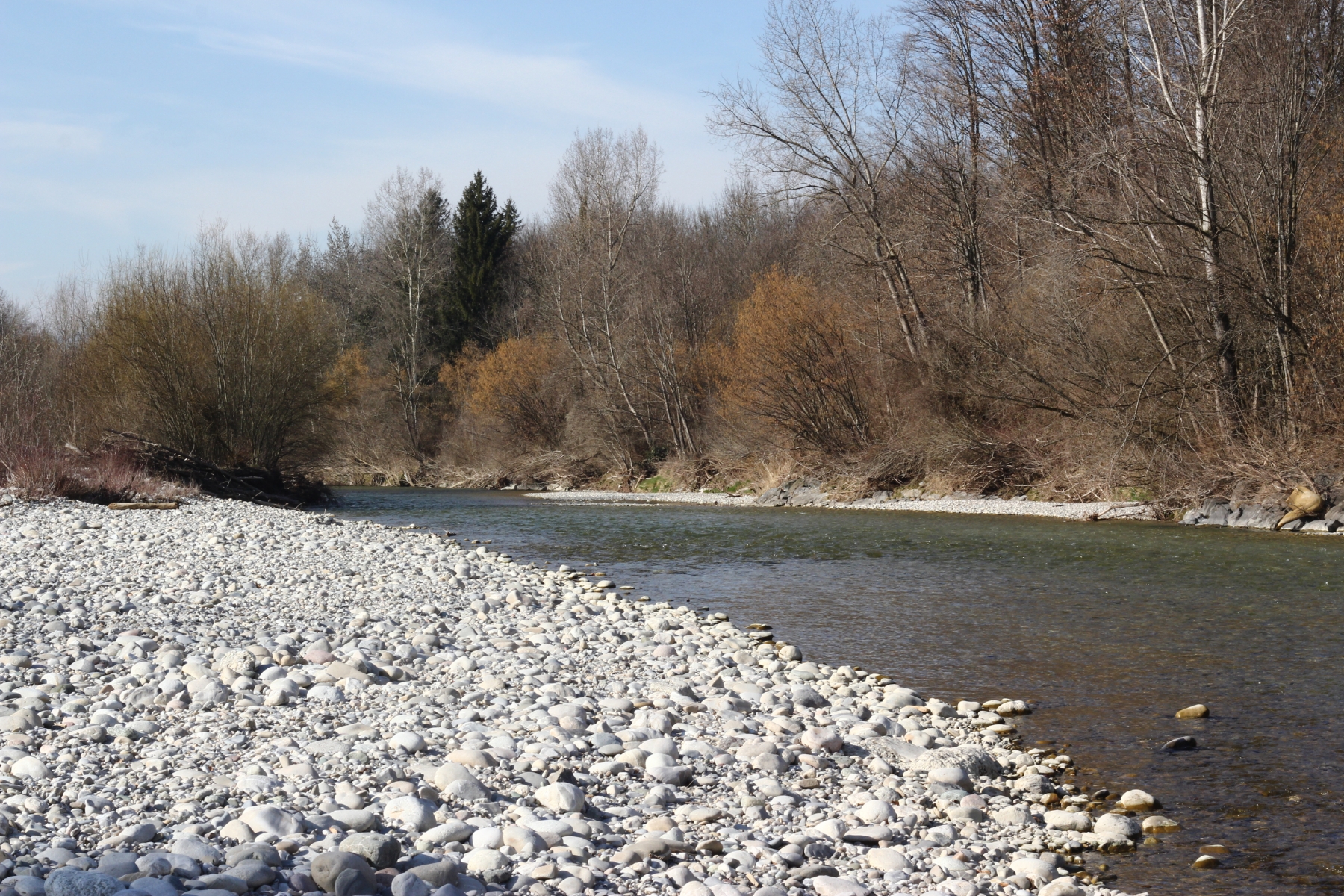The two newly discovered fish species have a name
In a survey, the public had a say in the names of the two fish species discovered by researchers from the University of Bern. The names have now been finalised – the Barbatula species are called "fluvicola" and "ommata".
Researchers from the University of Bern, the Natural History Museum of Bern and Eawag in collaboration with the Wyss Academy for Nature, the Canton of Bern, the Federal Office for the Environment and the Swiss Competence Center for Fisheries, have discovered two previously unknown fish species in Swiss waters. The species were discovered in the Rhine and Aare river systems by biologist Bárbara Calegari from the Division of Aquatic Ecology and Evolution at the Institute of Ecology and Evolution at the University of Bern together with other researchers.
Following the discovery of new species, they are given a scientific name. However, the name of the two newly discovered fish species was not decided by the research group alone. The public was invited to actively participate in the naming process by taking part in a survey. "Our aim was to raise awareness of biodiversity and their conservation status among the public while also learning more about the fish species in the local waters," says Bárbara Calegari.
Discovery of new fish species through morphological analysis
The fish species were both discovered in Swiss waters, but colonize different habitats. One species lives in the fast-flowing streams and rivers of the Rhine system and extends into the Danube in Germany and Austria ("fluvicola"), while the second species lives in the calmer lakes of the Aare system and has been found in Lakes Neuchâtel, Biel, Lucerne, Zurich and Walen ("ommata").
The new fish species belong to the genus Barbatula, also known as stone loaches. Although this genus is known for its genetic diversity, the research group focused its analysis on the morphology of the species in order to confirm them as new species for science.
"With comprehensive studies analysing the evolutionary relationships, external features, bone structure and ecology of the fish, we were able to find consistent differences that distinguish the new species from the remaining 13 already known European Barbatula species. This allowed us to confirm and validate the status of the new species," explains Calegari.
In comparison to each other, the two new species show differences that might be related to their habitats. The species from the fast-flowing waters is characterized by larger and more powerful pectoral fins, while the species from the calmer waters has smaller fins and a larger swim bladder, which is responsible for better buoyancy control.
Public names fish species
The discovery of new species is crucial for species conservation, as it forms the basis for conservation measures. "We can't protect what we don't know," emphasizes Calegari. Accurate identification and the assignment of scientific names to new species are key to their legal protection and essential for assessing extinction risk in regional and global Red Lists. The documentation of new species enables targeted conservation planning and contributes to the protection of freshwater ecosystems, which are also of great importance to humans.
To raise awareness of biodiversity, the population was invited to take part in naming the new fish species. "By actively involving people in the discovery process, we want to foster a deeper connection with nature and arouse interest in science," says Calegari.
A total of 1,919 people took part in the survey and voted on the Barbatula names proposed by the research group.
- "fluvicola" * was chosen as the name for the species from the fast-flowing waters. The name comes from the Latin fluvicola and means "inhabitant of rivers". It thus refers to the preferred habitats in rivers where this species was found.
- "ommata"* was chosen for the species from calmer waters. The name is derived from the Greek ómmata (ὄμματα) and means "eyes". This refers to the large diameter of the eyes of this fish species compared to others.
"We are delighted that so many people took part in the survey and that the fish species now will have a name," concludes Calegari.
* Guidelines for the correct naming of species: To follow scientific guidelines, the species name must be given in quotation marks only (“fluvicola” or “ommata”) without mentioning the genus name (Barbatula). This media release is not intended as a permanent scientific record or for the purposes of zoological nomenclature and does not constitute a publication within the meaning of the Zoological Nomenclature Code. The scientific publication, including species descriptions and names, will be published shortly.
Project LANAT-3Bárbara Calegari and the team from the University of Bern, the Natural History Museum of Bern and Eawag, in collaboration with the Wyss Academy for Nature, the Canton of Bern, the Federal Office for the Environment, and the Swiss Competence Center for Fisheries discovered the unknown fish species as part of the LANAT-3 project on behalf of the Wyss Academy for Nature, the Canton of Bern and the Federal Office for the Environment (FOEN), in collaboration with the Swiss Competence Center for Fisheries. Further information |
Institute of Ecology and EvolutionThe Institute of Ecology & Evolution at the University of Bern is devoted to research and teaching in all aspects of ecology and evolution and aims to provide a scientific basis for the understanding and preservation of our living world. It promotes the study of the mechanisms by which organisms respond to and interact with their environment, including phenotypic responses at individual level, change in gene frequencies at population level, change in species composition and abundance at community level, and the functioning of whole ecosystems. Further information |
The Division of Aquatic Ecology and Evolution at the Institute of Ecology and EvolutionFishes are the most diverse group of vertebrates, are key players in aquatic ecosystems, provide a diverse set of ecosystem services, and are sensitive to environmental change. The Division of Aquatic Ecology and Evolution at the University of Bern studies their ecology, evolution and conservation and focuses on the fish diversity from traits and genes in populations to the diversity of species assemblages, their change through time and the ecosystem consequences. Further information |
2025/03/06

